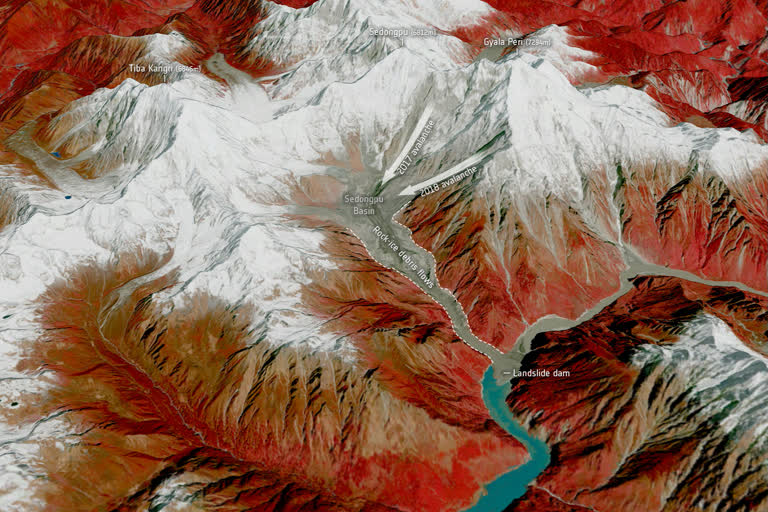New Delhi: An colossal ticking 'water bomb' in the form of an unstable artificial lake caused by landslides in 2017 and 2018 has stalled China’s plan of constructing two mega-dams on the Yarlung Tsangpo river which flows as the Siang in Arunachal Pradesh and the Brahmaputra river in Assam.
The lake, where about 600 million cubic meters of water has accumulated, has formed in a spot in the Sedongpu basin, a little upstream of the mega-dam site and located in a stretch where the world’s deepest canyon is located.
The Chinese government has already sent several teams of scientists and officials to the Sedongpu catchment area in an effort to find ways to release the massive water buildup so that ongoing work related to the mega-dams on the Yarlung Tsangpo river can commence.
As of now, with the upstream accumulation of water, workers are not able to work at the dam site.
Read: Russia getting requests from Indian states for Sputnik V vaccine supply: Dy envoy
Xing Xiguo, a civil engineering professor at the Shanghai Jiao Tong University, and who was part of the government team, has told the Hong Kong-based South China Morning Post: "The situation is very difficult. There is not an immediate solution yet."
Besides the instability due to rising pressure on the accumulated water to break the barrage, this region is extremely sensitive due to seismicity.
Very recently on Saturday (May 22, 2021), a 6.9 strong earthquake on the Richter Scale with an epicenter in the nearby Yunnan province had rocked this region causing destruction and loss of life.
China’s top legislature had approved the plan to harness electricity from the river on March 11, 2021, as part of the 14th Five-Year Plan (2021-25).
Read: Truth remains unafraid: Rahul Gandhi on Toolkit issue
Much before the making public of the 14th Five-Year Plan document, ETV Bharat had already reported about China’s plans to build a dam at two points on the Tsangpo-Brahmaputra river in eastern Tibet to generate huge amounts of electricity.
The two main sites were at Metok (Medog or Motuo) county and at Daduo (Daduquia) which are located very close to the border with India.
The river water is to be intercepted at about 3,000 metres altitude, led into tunnels to turbines at 850 metres (Motuo) and 560 metres (at Daduo). While the Metok dam is planned with a power generating capacity of 38,000 megawatts (MW), the Daduquia dam is to have a capacity of 43,800 MW.
Just for perspective, the world's biggest 'Three Gorges dam', also in China, produces 18,600 MW.
Construction of the planned dams also amounts to a gross violation of the internationally accepted rights of lower riparian countries which is India and Bangladesh in this case.



